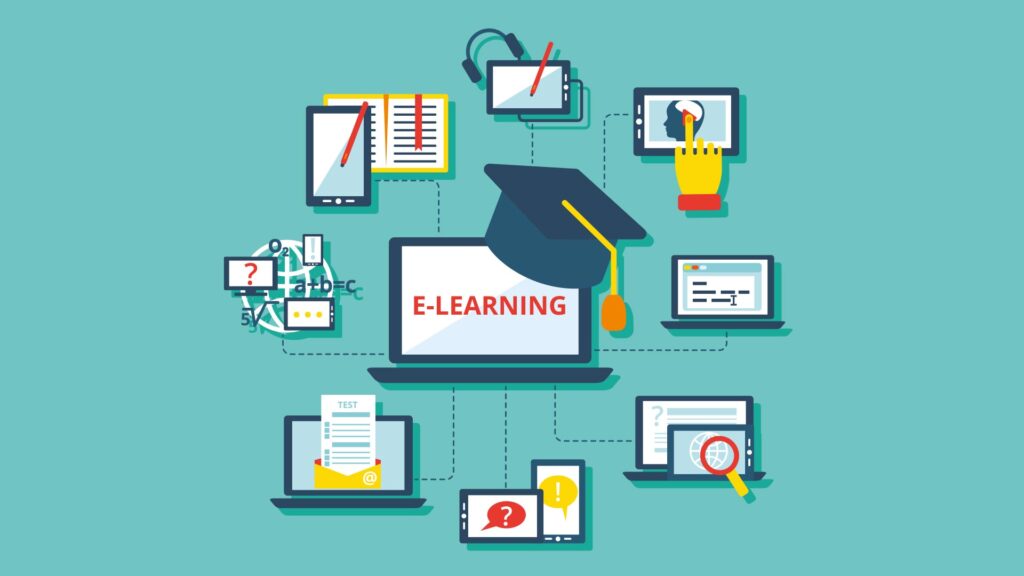In the e-learning format, there are some pros and cons. Despite the fact that this format of education has long existed in our life (according to research results, between 2001 and 2017, the demand for distance learning services increased by an impressive 900%), due to the coronavirus pandemic, distance learning has come under particular scrutiny. It would seem that in distance learning students have a lot of time to study, but according to the statistics of writers from BidForWriting, the number of orders for writing essays and homework has increased significantly.
What is e-learning?

E-learning, or distance learning, is a form of education where a student is geographically remote from the teacher and educational resources. Training is carried out using telecommunication and computer technologies. Distance learning can be conducted in an online format – it can be synchronous (teacher and students interact in real-time) and asynchronous (student and teacher interact at intervals in time).
Tasks from a teacher to a student can be transferred in different ways, for example, through:
- web services such as Google Class
- messengers
- LCMS and LMS
- social networks
a teacher’s blog, a special course blog, or, as they often say, a class blog (in the first case, a blog where the teacher uploads exclusively his or her own materials – in the second, about the joint space of a teacher or student)
By the way, if you are assigned a task that is too difficult for you, you can get help on a paper writing service, just visit this site. There you can be helped by professional writers who know how to handle the task faster and more efficiently. If, for example, you are assigned to write a 5-page essay, then you will be able to get a paper sample that you can use as a template for your writing. To learn more about this service, read this review.
Synchronous and asynchronous learning

Distance learning can be synchronous or asynchronous:
- Synchronous online distance learning provides maximum interaction between the student and teacher, as well as students with each other. In this way, it is easy to create the effect of being in the classroom or workshop to provide opportunities for the student to learn from the experience of professionals.
- Asynchronous distance learning allows you to get maximum freedom in mastering the material. While online learning is easy to ask your questions and immediately get an answer, with asynchronous learning, the focus is on independent work.
Disadvantages of e-learning
The cons of distance learning are usually mostly psychological and technical. At the same time, the negatives change over time. If initially, at the time of the emergence of new technologies, they talked more about the fear of innovations on the part of teachers, the anxiety, problems with the motivation of students, a lack of “live” communication, and the problem of user identification during task performance come to the fore.
Strong motivation required

Not everyone is motivated to study remotely. It’s one thing when there are classmates and a teacher nearby who guides you, and another thing when there are no rivals or guardians.
But, as a rule, the level of motivation is higher with age. Schoolchildren are more dependent on teachers and peers; for adults who learn for themselves, this point is less important, as they are more self-sufficient. Although here, not everything is clear. There could be no one-size-fits-all approach.
In addition, a lot depends on how e-learning is implemented. For example, intelligent modern LCMS used in educational programs have all kinds of interactive features that involve students in the process. Elements of gamification add pleasure to the learning process. And this, as you know, is a very important stimulator in order to achieve success.
Communication is reduced

The distance learning format is not well suited for developing the skills of “live” communication. It is so even if we are talking about online learning, where everyone in the virtual classroom sees and hears each other. Technical means act as a kind of wall.
A number of students on e-learning get very tired. They do not have enough normal live communication, the energy feeding from a live team. Many people lack regular communication with peers and teachers. Against this background, some students have difficulty concentrating, and the material is not assimilated in the way they would like.
User identification problem
Directly for training, it is not so important who is in front of the monitor screen. But if it is assumed that at the end of the training a certificate of a diploma is obtained, it is important that there is no cheating on the part of the students.
The ideal option is a system with biometric recognition. But the ideal is by no means always real because biometrics is expensive and difficult to implement.
Parents are forced to take over the function of the policeman

Moms and dads, who are now alone with their children, often have a hard time. Willy-nilly, parents find themselves involved in the educational process and are forced to take on the role of an overseer.
In addition, in conditions of self-isolation, already energetic children become even more active – accordingly, concentration on studies is even less. Teenagers, like all children, need to move a lot. But all the same, their energy is too much, events are not enough for them, and as a result, they bully each other. So the situation in the house is neither educational nor working.
A child at this age is not fully aware of all the responsibilities. That part of the tasks that working parents ask for independent study is done with the child in the evenings. Plus, homework is added to this, which must be completed on this particular day. For the child, the entire load is distributed in the evening; the execution is delayed until 11 pm when the parents and the child no longer realize what they are doing. All this training nullifies the expected learning outcome.
Conclusion

E-learning has its disadvantages:
- Lack of motivation
- Lack of communication
- Problems with user identification
- Parents are forced to take over the function of the policeman
Not all educational institutions or courses are capable of making e-learning strategically competent, which means that the tasks are not clearly defined, and the needs and characteristics of the target audience are not taken into account. In this situation, e-learning can’t become a priority. The correction of the negative aspects is in our hands.








